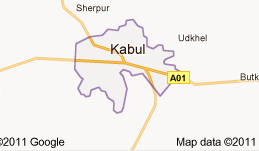Jalalabad, Afghanistan – I’m working in Nangarhar province in eastern Afghanistan at the moment, but I watched today’s Taliban attacks in Kabul unfold in real time on Facebook and Twitter and received multiple calls from friends close to the action. The attacks launched against the US Embassy and other high profile international targets were bold but not tactically surprising. I’ve experienced many similar attacks during my time in Kabul and they conform to the Taliban’s strategy at this stage in the war. For now, Taliban fighters are incapable of taking whole major cities, but, by launching complex, long-running attacks like those witnessed by Kabul residents earlier today, they can show that nowhere is safe and that mayhem can break loose at any moment, night or day.
Over time, as these attacks mount in the public imagination, demoralization sets in and the space for ordinary life shrinks. Investors back away. Elites look for their way out. The poor and the middle class retreat into fatalism and depression. Young people experience the trauma that left their parents’ generation irreparably scarred. The already weak and hesitant trust Afghan civilians placed in their police and military to keep them safe ebbs away.
As the frequency of attacks against the central districts of Kabul increases, the security costs for foreign organizations climb ever higher, straining aid budgets. Relief agencies scale back programs and send staff home. Diplomats and UN employees are forced behind ever thicker and higher walls. All of these developments weaken the Afghan government, which the Taliban aim to collapse and eventually supplant.
It’s raining in Kabul now. Residents are struggling to separate thunder claps from explosions as the Afghan and international security forces finish off the remaining attackers and take stock of the lives lost and buildings damaged. By tomorrow, the blood will have been washed into the drains and the streets will be open again, but the talk will be of end games –both personal and political.
